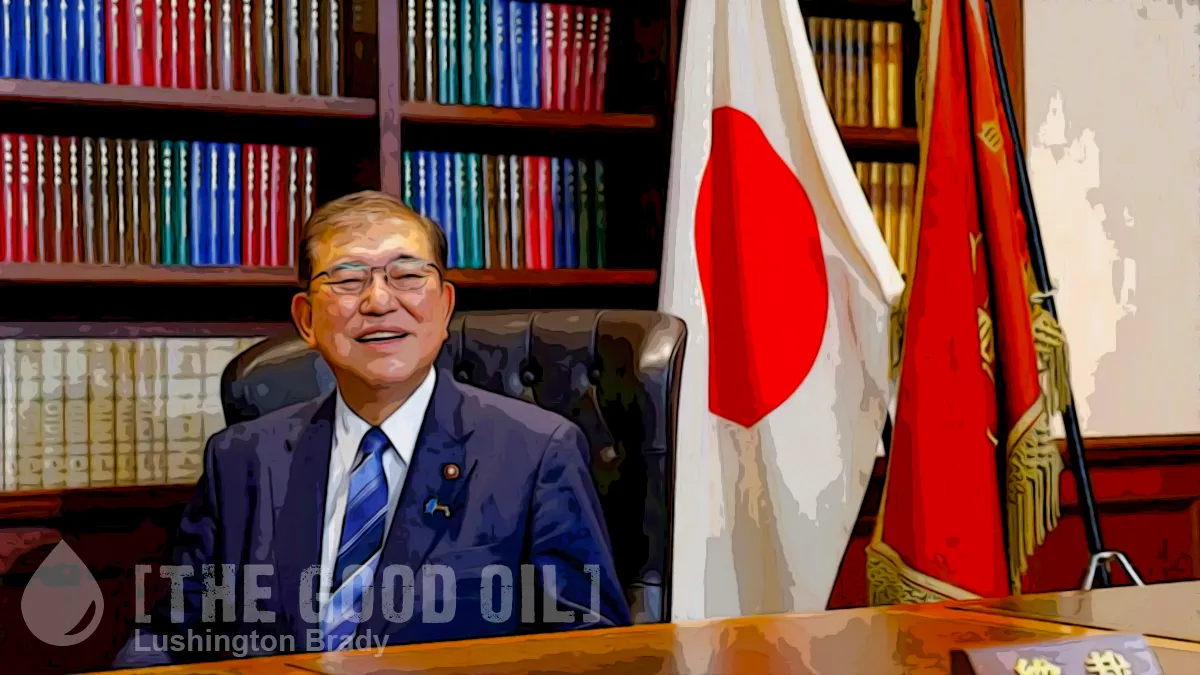With the Liberal Democratic Party (LDP) ruling for all but four of the last 70 years, most of us in the West have more or less regarded Japan as the epitome of political stability. In the last few decades, though, that apparent stability has masked an awful lot of turmoil, most obviously in what has become almost a revolving door of prime ministers.
Japan’s newest prime minister, announced on Monday, is Shigeru Ishiba.
But who is Ishiba?
Ishiba narrowly beat Japan’s would-be first woman PM, Sanae Takaichi, the economically conservative ‘Japanese Thatcher’. Ishiba, by contrast, ‘presents himself as a redistributor’.
In his victory speech, Ishiba left no doubt that his victory meant a selection of Shinzo Abe’s economic policy. He wanted to return to before the LDP recaptured the government under the national conservative Abe in late 2012. For the Japan expert Tobias Harris, it is therefore clear: ‘Ishiba wants to build a fairer economy.’
Which sounds an awful lot like old-fashioned, leftist, Keynesianism.
Former Prime Minister Abe relied on credit-financed large government budgets and a flood of central bank money to accelerate the economy from deflation to growth and new national strength. Abe accepted that the debt would grow to 250 percent of the gross domestic product and also the gap between rich and poor.
Kishida had also promised a ‘new capitalism’, which, however, did not differ much from Abe’s economic policy. While Takaichi wanted to continue Abe’s course aggressively, Ishiba acts as a redistributor from rich to poor.
If Takaichi is Japan’s Thatcher, then Ishiba seems like its Tony Blair.
He had repeatedly attacked the Abe wing as ‘reactionary rights’ while seeing himself as ‘conservative liberals’. His slogan is: ‘Security and security for all people’. He therefore calls for the minimum wage to be raised quickly by 30 percent to around 1500 yen [$16NZD].
In addition, unlike the right-wing LDP wing, he advocates increases in corporate taxes to strengthen redistribution. In particular, he wants to strengthen the rural regions such as his home, the Tottori Prefecture, which have been suffering from severe population decline for decades.
A former defense minister, Ishiba is unusually hawkish by modern Japanese standards.
There are still the greatest similarities with Abe in security policy. Abe had also launched a drastic increase in Japan's defense budget in response to China's rapid armament. Ishiba also sees himself as a defense expert. In the internal party election campaign, he even brought the idea of founding an Asian NATO into play.
On the foreign affairs front, though, there are fears that Ishiba will clash, not with Japan’s enemies, but its strongest ally, under a possible new leadership.
In the party, however, there is concern about a possible second term for Donald Trump. Trump and the idealistic Ishiba may be like fire and water, some politicians fear.
Ishiba has set a deadline for Japanese voters, rather than internal party politics, to decide on his new-minted leadership. He has called an election for October 27.
Japan’s ruling party wanted someone different. It might get more than it bargained for.
And Japan might get yet another new prime minister before America gets a new president.









